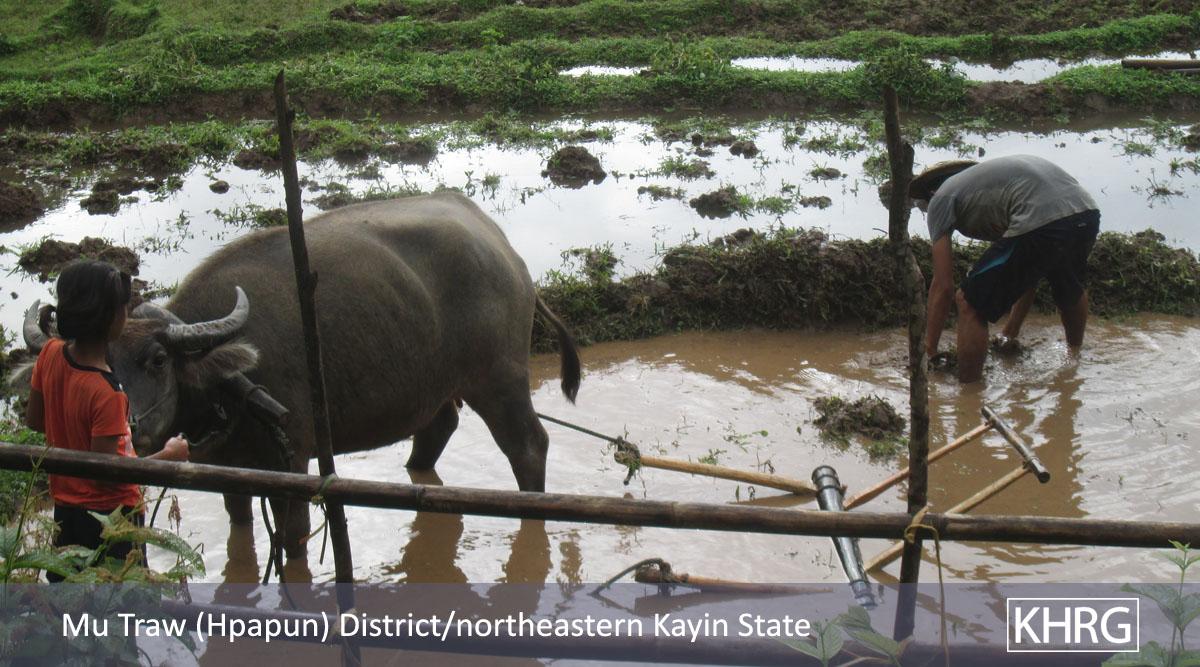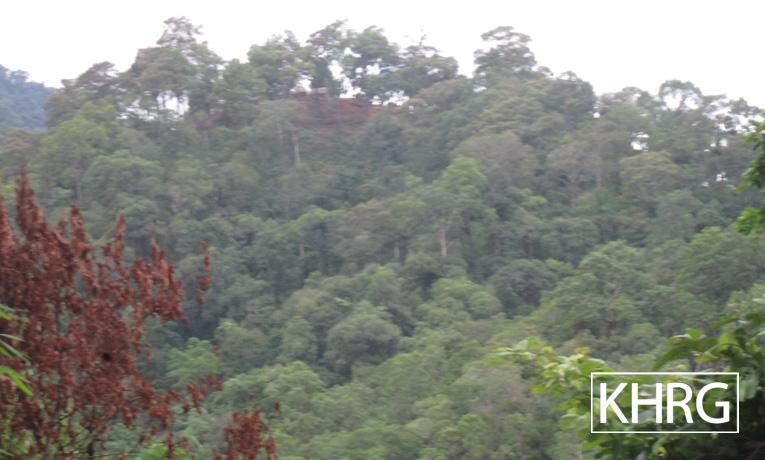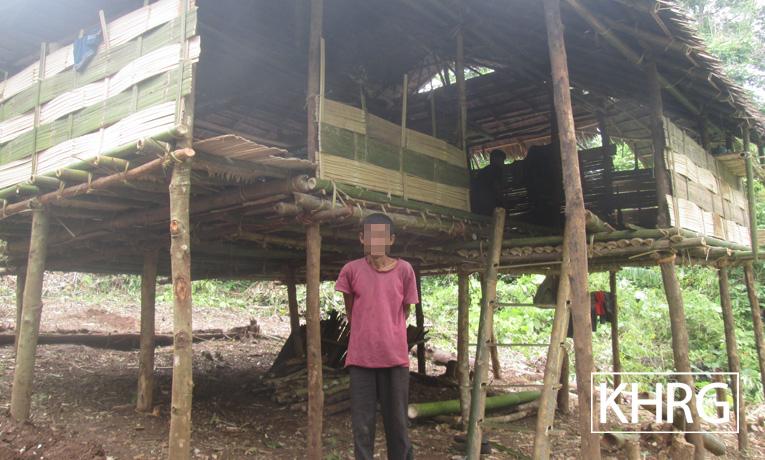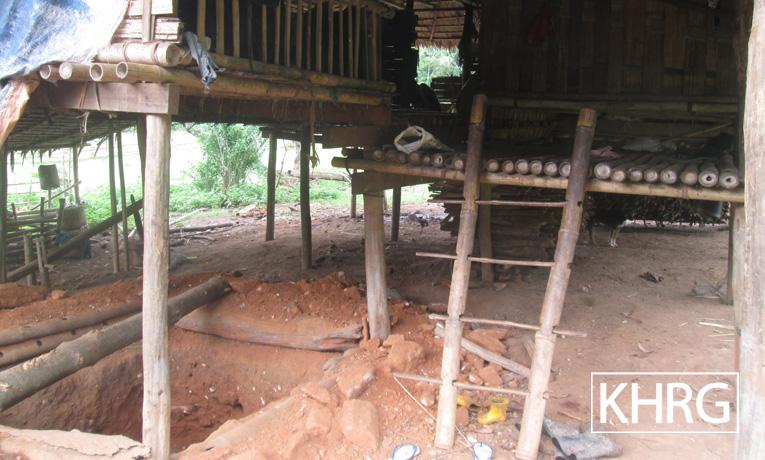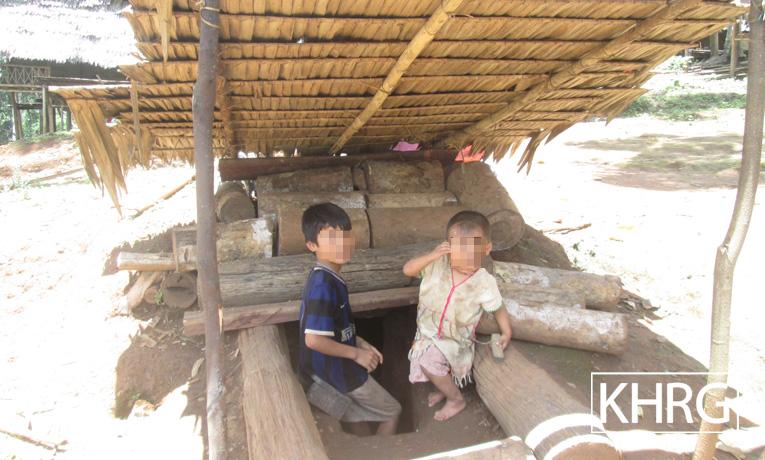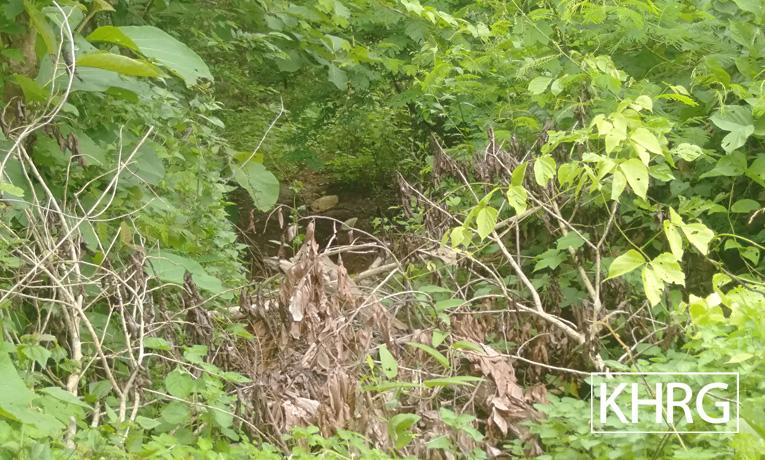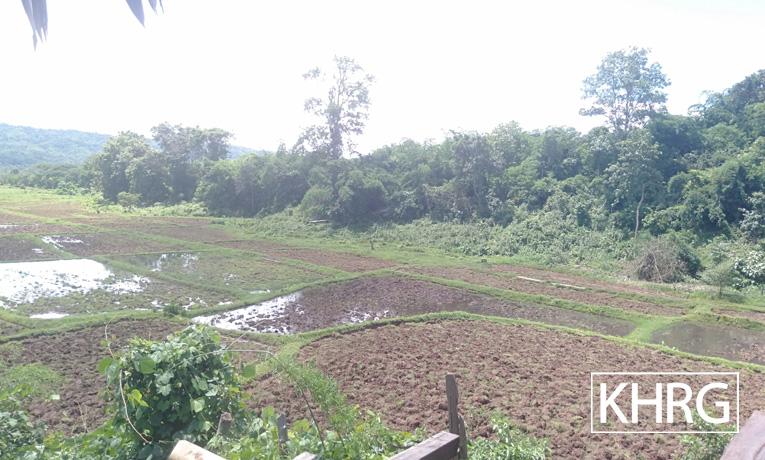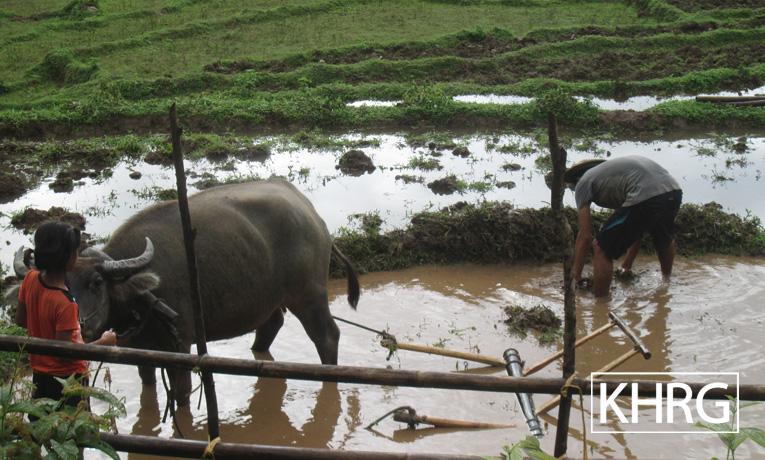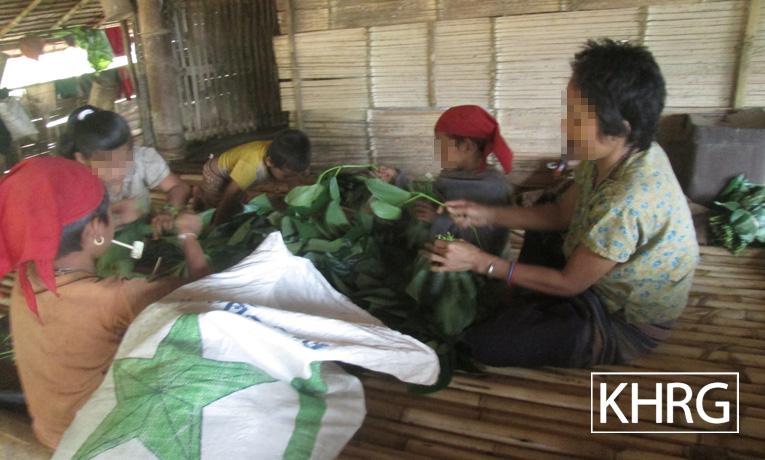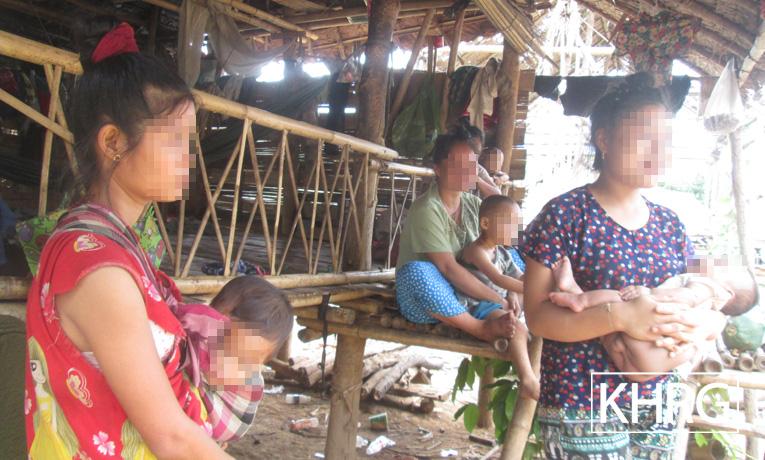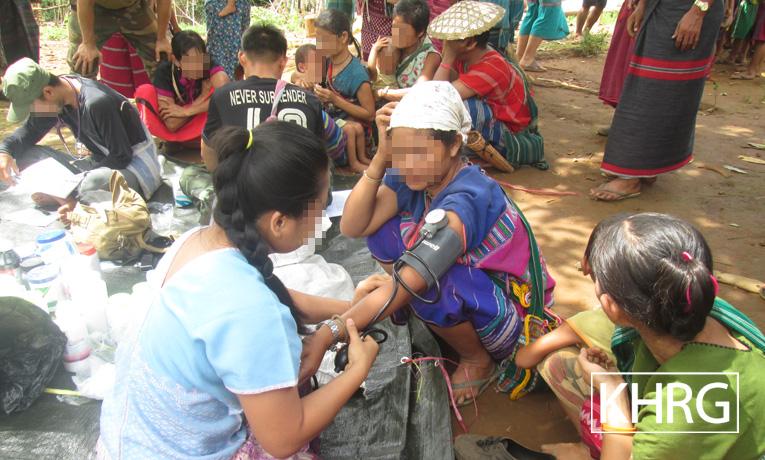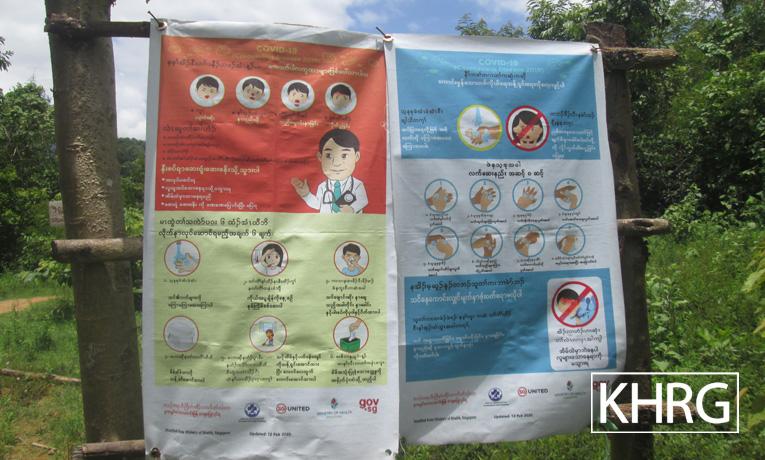This Situation Update describes events that occurred in Bu Tho Township, Mu Traw (Hpapun) District between May and July 2020. The Tatmadaw[1] sent more troops and ammunition to the local areas, resulting in several skirmishes with the Karen National Liberation Army (KNLA).[2] The Tatmadaw shelled civilian areas and farms in response to KNLA attacks, and also arbitrarily detained villagers and village leaders in one of their camps. Both the KNLA and the Tatmadaw planted new landmines. Local villagers now feel unsafe, and some communities have faced displacement and have seen their freedom of movement restricted because of the presence and activities of Tatmadaw soldiers. Access to healthcare remains difficult for villagers living in remote areas, and COVID-19[3] travel restrictions have delayed the start of the academic year and resulted in livelihood difficulties.[4]
Introduction
This Bu Tho Township situation update contains information about human rights violations that were committed from May to July 2020. Most of the incidents in this report are related to the shelling of farms and civilian areas by Tatmadaw’s Light Infantry Battalion (LIB)[5] #407, Military Operations Command (MOC)[6] #8 in Bu Ah Der village tract,[7] Bu Tho Township, Mu Traw District. Other incidents include travel disruptions [skirmishes, landmines, etc.] and arbitrary detention by the Tatmadaw.
Tatmadaw activities
On April 8th 2020, LIB #407 sent more than 65 soldiers and ammunition, such as 60 mm [mortar shells], M79 [grenade launcher], RPG-7 [rocker launcher] and 81 mm [mortar shells] to the Kaw Kaw Hta, Haw Ma Daw and Thoo Mweh Hta army camps. They sent more soldiers to expand their territory and build more army posts next to civilian areas and farms belonging to local villagers. Since the KNLA and the Karen National Defence Organisation (KNDO)[8] knew about their intentions, they blocked the way to the Haw Ma Daw army camp. [The KNLA closed the Meh Leh Hta old road to the Haw Ma Daw camp on March 8th. They also planted landmines in the area in April 2020 to prevent the Tatmadaw soldiers from expanding their camps; and fired at Tatmadaw soldiers in several instances].
The Kaw Kaw Hta, Haw Ma Daw and Thoo Mweh Hta army camps are located in the Meh Pa area, near G---, H---, K---, U--- and L--- villages in Bu Ah Der village tract, Bu Tho Township, Mu Traw District. The troops manning the Tatmadaw camps located along the Koh Loh Kloh Nee river usually rotate every four to six months.
On May 19th 2020, nine villagers and village leaders from B--- and H--- villages went to the Kaw Kaw Hta army camp to meet the LIB #407 battalion commander. However, when they arrived at the army camp, the battalion commander did not want to meet with them. He just sent two delegates, a company commander and a colonel, to meet with those villagers.
After the meeting, they [Tatmadaw officers] asked the villagers to make the necessary arrangements for them [LIB #407] to travel to the Haw Ma Daw army camp [to talk to the KNLA/KNDO to ensure that they will not be attacked along the way]. One of the village leaders responded: “[W]hen it is related to politics, civilians should not ask permission for you. [Local leaders] should not do it for you either. Many of your leaders have actually asked permission already. If it were going to work, it would have worked already. We, the civilians, cannot step in on this case.”
They [LIB #407] did not allow the villagers to return home and told them to sleep at the army camp [this amounts to arbitrary detention]. The Tatmadaw only released the villagers on May 23rd 2020. Before their release, the soldiers took their pictures and made them write down their names.
Skirmishes and indiscriminate shelling
Nine skirmishes occurred in Bu Tho Township between February and June 2020. They were caused by encounters [between Tatmadaw and KNLA/KNDO soldiers in restricted areas][9] and sniper attacks. [KHRG researchers] do not know how many soldiers died or got injured during the skirmishes.
The skirmishes broke out after Tatmadaw soldiers trespassed into restricted areas. Some of them happened near the villagers’ farms and houses in M---, K---, H--- and G--- and L--- villages, Meh Pa area, Bu Ah Der village tract. The fighting left the villagers frightened and afraid for their security. They are now concerned about the possibility of renewed fighting and shelling in the future.
On May 18th 2020, at 9 am, LIB #407 soldiers fired big weapons [60 mm mortar shells and grenades] at the Z--- farm, which is located near H---, S--- and B--- villages. It [the shelling] was in response to the attack of their army post in Nya Hsah Hkoh by soldiers from KNDO Battalion #1, Division #1 earlier that morning. The Tatmadaw soldiers manning the Nya Hsah Hkoh army post withdrew later that day. They were sent to the Kaw Kaw Hta, Thoo Mweh Hta and Blaw Tu army camps. On the evening of May 19th, the Tatmadaw fired big weapons twice on the hill near the hill farms belonging to villagers from H--- and M---. The villagers who were sleeping on their hill farms were worried that the shells might land nearby.
On May 18th 2020, Tatmadaw’s Infantry Battalion (IB) #19 from the Nya T’Kho Kyoh army camp also fired big weapons [60 mm mortar shells and grenades] near L--- village, so local villagers had to flee. They fled to the Thai-Burma border in order to enter into Thailand, but the Thai authorities denied them entry due to the Covid-19 restrictions [the border is officially closed]. They were eventually allowed into Thailand after informal negotiations with local Thai village authorities [they returned to their village on June 9th 2020].
Similar incidents [shelling] happened in Hkay Pu village tract, Bu Tho Township. Small skirmishes also happened in Htee Th’Daw Hta and Meh Pree village tracts.
KNU and KNLA activities
From February to June 2020, the Karen National Union (KNU)[10] and KNLA in Bu Tho Township have been operating under the direction of their leaders and increasing their numbers [military recruitment, presumably forced]. [Military] recruitment led some villagers who live close to the K’Ma Moe town to flee to other places. The KNLA recruited their father instead. [KHRG was not able to obtain more information about this specific case.]
Landmine contamination
Landmine contamination has been an issue in Bu Tho Township between February and June 2020. The KNU, KNLA and KNDO planted landmines to protect themselves and local civilians. They informed the local villagers in advance before they planted the landmines [KHRG's documentation shows that it does not prevent incidents]. They planted landmines in some areas near Tatmadaw army camps. Villagers who faced problems with landmines [landmine injuries][11] were the villagers who [had no choice but to venture] into [contaminated] areas [to find food or secure their livelihoods]. [It would appear that some of these villagers did not take the warnings seriously]: “It does not matter because the [KNLA] soldiers are just saying [that they are planting landmines]. They did not actually plant landmines.”
The Tatmadaw also planted landmines at a distance of 500 feet [152.4 metres] around their army camps to protect themselves. Tatmadaw soldiers also monitor their enemy [KNLA] through rifle scopes [and binoculars] at a distance of around 300 feet [91.44 metres] outside their army camps.
The Tatmadaw units based near the [Thai] border did not inform the local civilians about the location of their landmines because the local villagers avoid them [avoid the soldiers]. Y---, a Thai villager from W--- village, confirmed that LIB #434 planted landmines [in Meh Klaw village tract on May 30th 2020].[12] He got to know about it because he used to cook for the Tatmadaw commander at the army camp. The battalion leaders paid him 220,000 kyats [USD 163.13][13] per month to cook [for the Tatmadaw soldiers] twice a day. They paid for a chef because they did not allow their soldiers to travel [because of COVID-19 restrictions]. Landmine contamination in the area created difficulties for the farmers because they worry their cows and buffaloes might get injured.
Livelihoods
Travel restrictions to curb the spread of COVID-19 were implemented in the beginning of 2020. They made it hard for the villagers in Bu Tho Township to travel for their livelihoods or to sell/buy food and crops.
There are eleven village tracts in Bu Tho Township. Their population is ethnically diverse: S’Gaw Karen, Pwo Karen, Shan, Kaw La [Muslim][14] and Bamar.[15]
Villagers living in mountain areas work on hill and plain farms for their livelihoods. Some of the villagers who live near the vehicle road and K’Ma Moe Town are traders, while others work on plantations. However, most of the villagers in Bu Tho Township work on hill and plain farms, so only a few of them are traders.
Even though the peace process is currently underway, the villagers in Bu Tho Township do not enjoy real peace, full rights and freedom to work for their livelihoods yet because the Tatmadaw keeps operating in the area. The Tatmadaw always trespasses into the prohibited areas inside KNU territory.
Education
Civilians [children] in Bu Tho Township have yet to enjoy full access to education. There are Myanmar government schools, KNU [Karen Education and Culture Department][16] schools, community schools, private schools and religious schools in Bu Tho Township. Most of the private and community schools are in small villages. Government schools are located in the villages near vehicle roads and towns such as Hpapun and K’Ma Moe. However, students who go to government schools have to pay school fees [this should not be the case, as primary and secondary school enrolment fees were abolished by the Myanmar government] and monthly fees to teachers [presumably tuition fees] or schools leaders.
The Covid-19 pandemic has delayed the start of the academic year [2020-2021]. In the villages controlled by the KNU, schools started their classes in July 2020. Government schools have not started yet.
Healthcare
No new healthcare program was implemented in Bu Tho Township [over the reporting period]. The KNU conducted an anti-malaria campaign in every village. There are two KDHW [Karen Department of Health and Welfare][17] clinics: one in O--- village, Meh Klaw village tract, and one in V--- village, Meh Hkoo village tract. They have been operating for more than seven years.
People who live far from the clinics or hospitals still rely on traditional medicine. People who live close to a hospital rely on that hospital whenever they are sick. If they go to a government hospital, they always have to pay [medical costs]. All the villagers who go to the Hpapun hospital for medical checks, hospitalisation or surgery know about it. They [healthcare staff] give prescriptions to the villagers, and then the villagers have to buy medicine from a pharmacy located in the hospital compound.
Villagers in mountain areas still rely on traditional medicine. They only go to KDHW clinics when they face major illnesses. However, due to [bad road infrastructure and a lack of means of transport], these villagers have to travel [long distances] on foot to access the closest clinic/hospital, which can prove challenging. Communities who live near the [Thai] border go to the hospitals in the refugee camps [in Thailand].
On June 12th 2020, villagers from H---, M---, K---- and G--- villages, Bu Ah Der village tract, Bu Tho Township, were displaced because of artillery shelling by the Tatmadaw. They received medicine and money (1,000 baht [USD 33.26] per family) from the Free Burma Rangers (FBR).
Conclusion
This report assesses the current situation in terms of militarisation. The main difference is that villagers now enjoy more freedom of movement when compared to the past [before the NCA]. In 2020, local villagers have asked the journalists who visited their communities: “How is the situation in the country and what will happen in the future?”
The Tatmadaw fired big weapons and planted landmines around their army camps. Soldiers from KNDO’s Company #1 found a landmine that was planted by the Tatmadaw near the Meh Ra Hta army camp [KHRG was not able to obtain more information about this case].
The KNLA and KNDO also planted more landmines in 2020. Villagers reported that landmines planted by armed actors near their army camps are not a problem for them. However, they are concerned when armed groups plant landmines on their farms or in areas that their cows and buffaloes can reach.
Footnotes:
[1] Tatmadaw refers to the Myanmar military.
[2] The Karen National Liberation Army is the armed wing of the Karen National Union.
[3] Coronavirus disease 2019 (COVID‑19) is an infectious disease caused by severe acute respiratory syndrome coronavirus 2 (SARS-CoV-2). It was first identified in December 2019 in China, and has resulted in an on-going pandemic. For more information, see WHO, “Coronavirus disease (COVID-19) pandemic”.
[4] The present document is based on information received on July 23rd 2020. It was provided by a community member in Mu Traw who has been trained by KHRG to monitor human rights conditions on the ground. The names of the victims, their photos and the exact locations are censored for security reasons. The parts in square brackets are explanations added by KHRG.
[5] A Tatmadaw Light Infantry Battalion (LIB) comprises 500 soldiers. However, most Light Infantry Battalions in the Tatmadaw are under-strength with less than 200 soldiers. Yet up to date information regarding the size of battalions is hard to come by, particularly following the signing of the NCA. LIBs are primarily used for offensive operations, but they are sometimes used for garrison duties.
[6] Military Operations Command (MOC) is comprised of ten battalions for offensive operations. Most MOCs have three Tactical Operations Commands (TOCs) made up of three battalions each.
[7] A village tract is an administrative unit of between five and 20 villages in a local area, often centred on a large village.
[8] The Karen National Defence Organisation (KNDO) was formed in 1947 by the Karen National Union and is the precursor to the Karen National Liberation Army (KNLA). Today the KNDO refers to a militia force of local volunteers trained and equipped by the KNLA and incorporated into its battalion and command structure; its members wear uniforms and typically commit to two-year terms of service.
[9] As per the 2012 preliminary ceasefire agreement between the KNU and the Burma/Myanmar government, the Tatmadaw are only allowed to operate and travel up to 50 yards from either side of roads that connect their army camps through KNLA territory, and only within a 150 yard radius around their own army camp.
[10] The Karen National Union (KNU) is the main Karen political organisation. It was established in 1947 and has been in conflict with the government since 1949. The KNU wields power across large areas of Southeast Myanmar and has been calling for the creation of a democratic federal system since 1976. Although it signed the Nationwide Ceasefire Agreement in 2015, relations with the government remain tense.
[11] See KHRG, “Southeast Myanmar Field Report: COVID-19, armed conflict, landmines and sexual violence, January to June 2020”, September 2020.
[12] See KHRG, “Southeast Myanmar Field Report: COVID-19, armed conflict, landmines and sexual violence, January to June 2020”, September 2020.
[13] All conversion estimates for the kyat and baht in this report are based on the December 13th 2020 official market rate.
[14] The classification ‘Muslim’ in Southeast Myanmar is referred to and often self-identified as both a religion and an ethnicity. Muslims in Myanmar can be of different or mixed ethnicity. In Rakhine State there are two main groups, the self-identified Rohingya Muslims (not recognised by the Myanmar government and referred to as Bengali) and the Kaman/Kamein Muslims (officially recognised as one of Myanmar's 135 ethnic races). Outside Rakhine State, Muslims can also be Indian Muslims, Pakistani Muslims, Malay Muslims, Chinese Muslims (Panthays), Burmese converts, and Muslims from mixed marriages. Muslims in Southeast Myanmar mostly self-identify as 'Muslim'.
[15] The majority ethnic group in Myanmar, also known as ethnic Burmese or Burman.
[16] The Karen Education and Culture Department is the education department of the Karen National Union. Its main goals are to provide mother tongue education services to rural Karen populations in Southeast Myanmar, as well as to preserve the Karen language, culture and history. Despite being an important education provider in the region, it is not officially recognised by the Myanmar government.
[17] The Karen Department of Health and Welfare (KDHW) is the health department of the Karen National Union. It was established in 1956 to address the lack of public healthcare resources in rural Southeast Myanmar. It currently operates a network of community-based clinics in the region, but its capabilities remain limited due to funding constraints.

